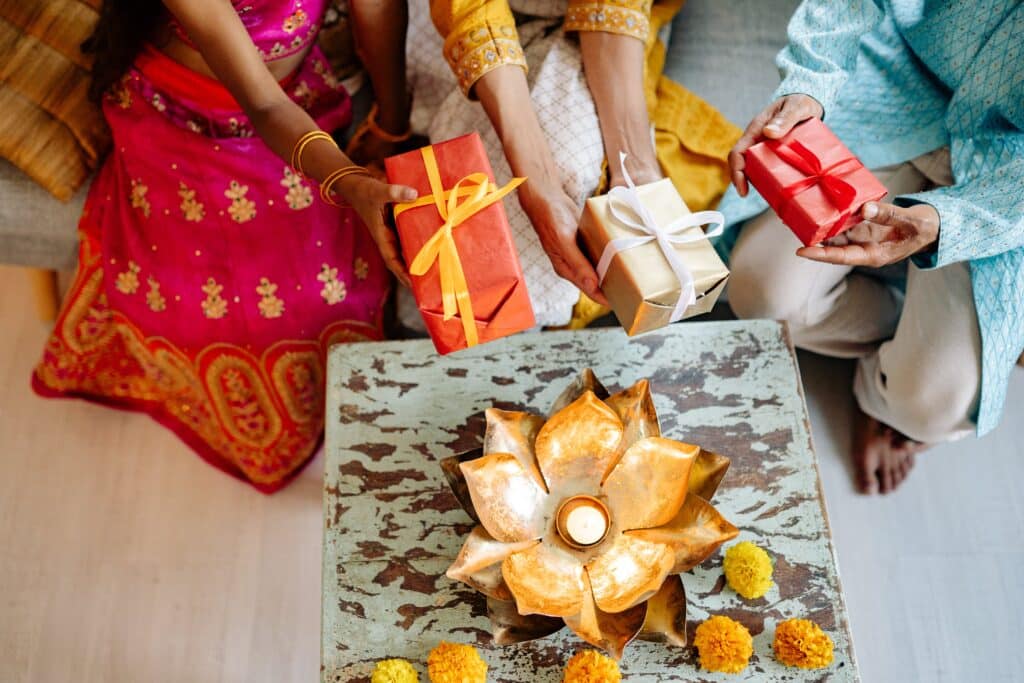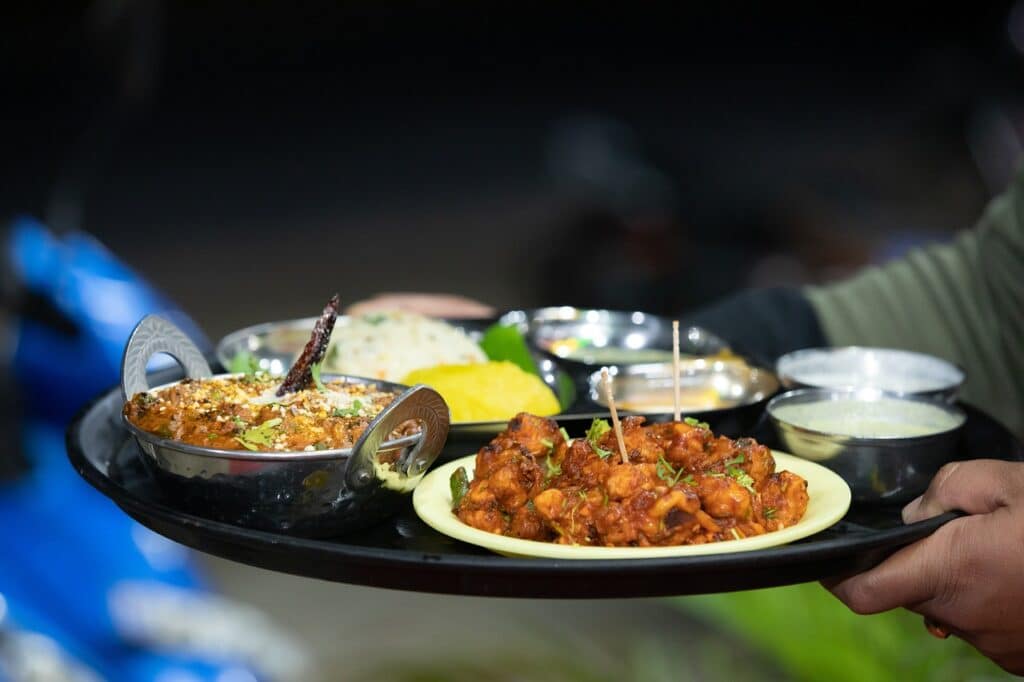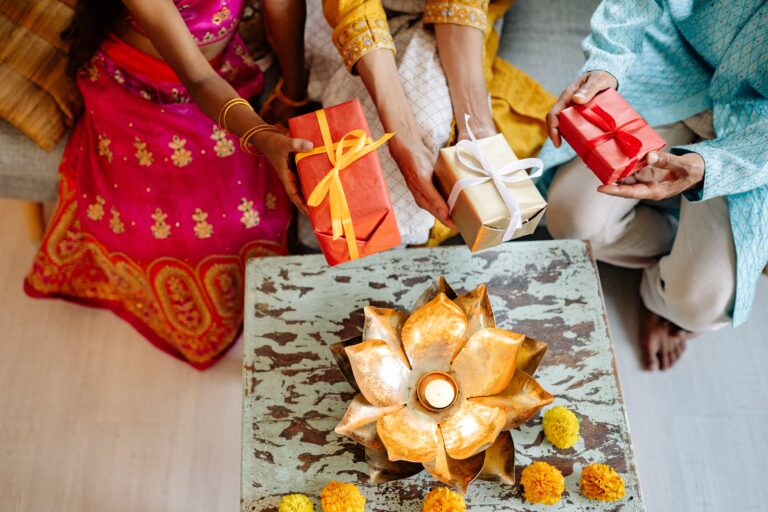On behalf of everyone at Remitly, Merry Christmas to our customers in India and around the world!
If you’re from somewhere other than India, you may be surprised to learn that the holiday is widely celebrated on the subcontinent, but Christmas in India is very popular. Although, the celebrations in the country are different from those in America or elsewhere in the world.
In this piece, we’ll take a closer look at how Indians celebrate Christmas, covering traditions, food, decorations, and more. We’ll also give you some ideas about how to have a merry Indian Christmas while living abroad.
How many people celebrate Christmas in India?
Christians account for 2.4% of India’s population, and you can find Christian families everywhere, from Goa to Sikkim and Chennai.
Every year, these communities prepare for Christmas at home and share the experience with their neighbors, whether Hindu, Muslim, Parsi, or Jewish. After all, Christmas is a public holiday that everyone in India can enjoy.
Many people refer to Christmas as “Bada Din“ or the “Big Day.“ When greeting people during the holiday season, it’s common to say “Happy Christmas.“
How India celebrates Christmas
There is a holiday tradition for every community in India, and it’s this diversity that makes the Christmas season so exciting and festive. The Christian population in the country enjoys numerous traditions, from carol singing to nativity plays and local cuisine, there’s so much to enjoy about celebrating Christmas in India. Let’s take a look at some key traditions.
Gift giving
The Christian community in India shares in keeping with worldwide Christian Christmas traditions, such as exchanging gifts and waiting for Santa Claus on Christmas Eve. In fact, there are several names for Santa Claus, including:
- Christmas Thaathaa, in Tamil Nadu and Telugu
- Christmas Baba, in Hindi-speaking regions
- Christmas Papa, in Malayalam
- Natal Bua or Christmas Elder Man, in Marathi
One big difference between Santa Claus in India and Western countries is that he arrives not in a sleigh pulled by reindeer but rather in a horse-pulled cart.
Displaying decorations
Christmas Festivities abound across all states in India, from Maharashtra to North East India and the Southern states. Much like Christians abroad, Christians in India set up Christmas decorations.
Many may choose to decorate a Christmas tree, and children look forward to Christmas morning when they can open their gifts. In areas like Mizoram, children receive Christmas gifts on a plate called a thlang-ra.
Christmas trees in India may feature decorations similar to those in other countries. Some families place cotton wool on their trees to create the illusion of freshly fallen snow. In areas where trees are hard to come by, people may instead display leaves from banana or mango trees.
Many buildings become beautifully lit during the holiday season. While fairy lights may be strung around house windows around the country, it’s also common for families to light traditional Indian oil lamps or diyas used for other festivals like Diwali.
Another common decorating tradition is building a Christmas crib out of wood and hay. Some families erect one each year and then finish off their Christmas cribs with a Baby Jesus statue. Many people also display nativity scenes that include many figures from the Christmas story, such as Baby Jesus, Mary, Joseph, shepherds, and the three wise men.
Other Indian Christmas decorations include poinsettia flowers, paper streamers, and paper lanterns. Some regions have their own unique decorating traditions. For example, they hang Christmas stars outside of homes or offices in Kerala.

Visiting Christmas markets
In North-Eastern cities and villages, the Christmas holiday is celebrated with much fanfare throughout the month, as communities set up night bazaars or Christmas Markets. Food stalls sell savory dishes, small pastries, and other sweets, and artisans show off their creations. Families come together to share meals and exchange gifts, while children eagerly await the arrival of Santa Claus. Similar to the lively celebrations seen in North-Eastern cities, the christmas traditions in Nigeria include vibrant street parades, caroling, and community gatherings that foster a spirit of unity and joy. The festive atmosphere is palpable, with decorations adorning homes and public spaces, creating a magical ambiance that captures the essence of the season.
People flock from various parts of South West India to attend the Cochin Carnival at Fort Kochi. Held every year during the last week of December, it includes friendly competition in the form of bike races, wrestling and boxing matches, and marathons. The event also includes food festivals, live musical performances, and art shows.
The fun of the festival culminates with a processional on New Year’s Eve. At the end, attendees burn an effigy of an old man.
Attending midnight mass and other church services
In Goa, the Roman Catholic community sings Christmas carols and attends Midnight Mass at historic Portuguese cathedrals. It’s also not uncommon to find Christmas celebrations spilling into restaurants and beach parties. Goans also enjoy baking plum Christmas cake and dodol.
Rather than going to a traditional midnight mass service, Christians who aren’t Roman Catholics may attend church service earlier in the evening on Christmas Eve, at midnight, or on Christmas Day.
Wearing new clothes
In many parts of India, Christmas is a time to show off new clothes, jewelry, and accessories. Local stores will often run sales on their latest styles to meet the demand.
Singing Christmas carols
Many Indians spread Christmas cheer by singing Christmas carols, and many well-known Indian artists have released songs for the holiday season. The following are some songs you can include on your Indian Christmas playlist:
- “12 Days of Christmas“ by Boymongoose
- “Another Bandra Christmas“ by Starring Vanya
- “Drummer Boy“ by Geeta Brothers
- “For Christmas“ by Zaeden ft. Natania
- “Happy New Year to You“ by Shailendra Singh
- “Jingle Bells“ by Superwoman
- “Silent Night“ by Yush
- “We Wish You a Merry Christmas“ by Kuljit Bhamra
- “A Wonderful Christmas“ by Isaac Koshy
Sharing a traditional Christmas dinner
Christmas goodies and food are an important part of Christmas cheer in India. Some popular delicacies served during the Christmas holiday in India include:
- Allahabadi cake, a rum fruit cake
- Mathri, a flaky biscuit made from flour and water
- Neoreos, deep-fried pastries stuffed with coconut, dried fruits, cashew nuts, and jaggery
- Bebinca, a layered coconut milk cake commonly enjoyed in Goa
- Roast turkey or chicken
- Vindaloo, a spicy Indian curry
- Kheer, a rice pudding made with milk and sugar or jaggery
- Momos, savory or sweet dumplings
- Mutton or chicken stew
- Sannas, steamed rice cakes
- Achu murukku, rose cookies that are popular in South India
Preparing for the Christmas season means self-sacrifice to some Indians. In Kerala, Christians may choose to fast from the first of December until the end of the month.

Keeping Indian Christmas traditions alive abroad
For most Indians far from home, Christmas celebrations are easy to participate in. Countries like the United States, the United Kingdom, Australia, and Canada, as well as most European countries, all celebrate Christmas. Whether you are Catholic or Protestant, there are churches and resources worldwide to keep the season festive. In addition to traditional customs, many Indians abroad blend their heritage with local practices, creating unique and multicultural festivities. For those curious about how various cultures celebrate the holiday, “australian christmas celebrations explained” can provide insights into the distinctive summer festivities, barbecues, and beach outings characteristic of Australia. These diverse experiences help strengthen connections to both Indian roots and the adopted culture.
However, even if Christmas is the most popular holiday where you live, Christmas in India is nostalgic. And if you’re working abroad as an expat without your family, it can feel lonely.
Outside of celebrating Christmas Eve or Christmas Day virtually, you can also attend Midnight mass or other services at your local churches. You can also find Indian-majority or led churches in your area. Some of these churches even conduct services in various Indian languages. Some examples include:
- Indian Churches in the USA
- Indian Churches in Australia
- Indian Churches in the UK
- Indian Churches in Canada
You can find more churches through the Indian Christians United network.
Furthermore, you can still participate in local Christmas markets and sales, bake a Christmas cake, set up Christmas decorations, and invite your local friends to Christmas dinner. Many countries, such as the U.S. and the UK, have—Indian or not—to a Christmas feast or potluck to share in the holiday spirit.
Making your favorite Christmas dish is easy. You can find most ingredients for Indian cuisine at your local international market, Indian or South Asian grocery, or online.
But what about your family back home?
It’s possible to keep the Christmas tradition alive.
You can send gifts via Amazon India or Flipkart. Or surprise your family members with a Christmas dinner from a delivery application and pay the bill online. Another option is to attend virtual church services together.
Some additional ideas for your long-distance Christmas celebration are:
- Secret Santa
- Holiday bingo
- Livestream a nativity play
- Sing carols together on Skype or WhatsApp Video
- Share advent calendar activities leading up to Christmas Eve
- Share your favorite pieces of scripture
- Send e-cards to your loved ones
This Christmas, send support to loved ones
A fundamental Christmas tradition is giving gifts. During this Christmas holiday, one of the most appreciated gifts is money. While it seems impersonal, sending money when you’re far from home is often easier and more affordable than sending gifts through the mail. You can easily spend a few thousand rupees sending gifts, only to have customs ask your family to pay duties and taxes to receive the package. But sending money directly is easier for everyone, and it allows your friends and family to buy what they need and want.
FAQs
Yes, despite Christians making up only 2.4% of India’s population, Christmas is widely celebrated and recognized as a public holiday. People from various communities join in the festivities, making it a joyful occasion across the country.
Indian Christmas celebrations include decorating homes with trees adorned with cotton to imitate snow and creating nativity scenes with local materials. Christmas markets are common, selling festive foods and handmade goods, while many also attend midnight mass, especially in areas like Goa and the North-East where Christian communities are more prevalent.
Christmas in India includes a variety of festive dishes that combine traditional Indian flavors with Christmas classics. Popular treats include Allahabadi cake (a rum fruit cake), flaky mathri biscuits, bebinca (a coconut milk cake from Goa), and neoreos (deep-fried pastries stuffed with coconut and dried fruits). Alongside these are dishes like roast chicken, spicy vindaloo curry, and steamed rice cakes called sannas.

